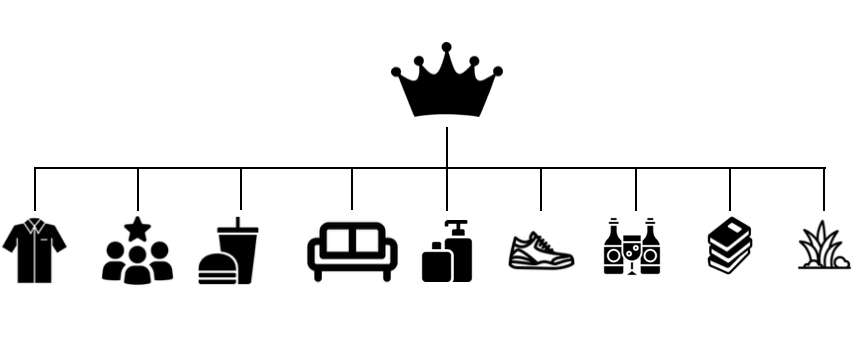Is There A Future For New Mass Market Brands?

There is a future for new mass market brands. However, it will be more challenging than it has been in the past.
The inevitable fate of mass-market brands is price competition and product commoditization, so the managers of great brands aren’t interested in the masses. They see more growth and profitability in developing targeted brands. Instead of indiscriminately chasing all customers, they actively segment the market and seek out a select customer base that shares an affinity with the brand. This selectivity reinforces the brand identity and enables organizations to develop products, services, and standards tailored to meet the needs and desires of their most valuable customers.
Is this the Final Chapter for New Mass-Market Brands?
Creating new brands has been an engine of innovation and competitiveness in the ever-changing landscape of consumer markets. Recent mass-market brand popularity is on the decline, though. Let’s delve into the changing dynamics and investigate the factors that may pose serious problems in today’s business climate for the conventional idea of new mass-market brands.
Consolidation and Saturation
The saturation of the market is a major contributor to the widespread belief that emerging consumer brands are on the decline. The mass market has grown saturated with well-established and up-and-coming companies, making it difficult for upstarts to develop a name for themselves. New entrants need help distinguishing themselves and achieving traction in the face of fiercer competition for consumers’ attention and market share.
The concentration of sectors has also resulted in the dominance of a few powerful companies that have fortified their positions and shut out smaller rivals. New mass-market brands face formidable barriers to entry since established ones have economies of scale, robust distribution networks, and substantial market power.
Fragmentation And Shifting Consumer Tastes
Another challenge for emerging mass-market businesses is customers’ fickle tastes. Changing customer preferences have spurred a demand for specialized products and services. Customers nowadays want unique services and goods that cater to their preferences and beliefs. As a result, the industry is becoming more segmented, with customers increasingly drawn to niche-specific products.
Consumers who place a premium on individuality and originality may need help connecting with new mass-market brands designed to appeal to a wider audience. We reduce the opportunity for new entrants since the one-size-fits-all strategy of conventional mass-market companies may need to be more enticing to customers seeking customized solutions.
Long-Term Consumer Confidence in the Brand
Long-standing names in the mass market have built up a substantial advantage over upstarts due to customers’ trust and devotion to their brands. Customers have established loyalties to well-known companies, making it difficult for upstarts to win them over. Trust in prominent businesses is high because of the time, money, and effort put into marketing, advertising, and relationship-building efforts.
The proliferation of consumer-generated content and peer evaluations online has also increased the weight of individual viewpoints. When consumers have a bad encounter with a new brand, word gets around fast, damaging the business’s image and making it harder to win more customers. It may be difficult for new mass-market companies to gain consumers’ confidence since doing so takes time, money, and repeated good experiences.
The Impact of Digital Disruption and D2C Business Models
Thanks to the digital revolution, the advent of e-commerce and social media has allowed businesses to interact more directly with their target audiences than ever before. Because of this change, well-known companies may now capitalize on their online following and customer base, disrupting the status quo of conventional distribution channels.
The rise of D2C models in the internet era has allowed well-known businesses to bypass intermediaries and provide consumers with lower prices, more granular product options, and more streamlined shopping procedures. New mass-market companies need more resources and infrastructure to develop traction and a sizable consumer base on the Internet.
Conclusion
It may be too soon to say that new mass-market brands are dead, but it is clear that the environment is changing, bringing both new obstacles and new possibilities. New entrants now face a more difficult environment due to market saturation, shifting consumer tastes, ingrained brand loyalty, and the emergence of digital disruption.
Despite the challenges, this shifting environment presents new opportunities for creative strategies, including targeting profitable niches, making the most of digital channels, and forging meaningful connections with customers. Strategic adaptability, differentiated value propositions, and in-depth knowledge of shifting consumer dynamics are essential for the success of new mass-market brands. Traditional mass-market dominance may be waning, but opportunities exist for businesses that can adapt to shifting customer tastes and industry dynamics.



